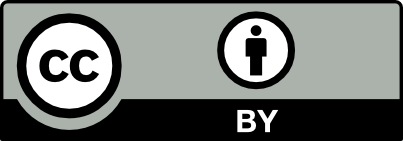The influence of PET and PBT contamination during transportation fuel production via pyrolysis
DOI:
https://doi.org/10.14232/analecta.2021.1.82-87Keywords:
Plastic waste, Pyrolysis, Reflux temperatureAbstract
The pyrolysis of plastic waste is a promising method to reduce waste accumulation while it could provide value-added transportation fuels. The main goal of this study is to investigate the influence of PET and PBT contamination during plastic pyrolysis oil production utilizing HDPE, LDPE, PP, and PS mixtures as these plastics are good candidates for transportation fuel production via pyrolysis and distillation. Seven different waste blends were prepared and pyrolyzed in a laboratory-scale batch reactor equipped with reflux. Mass balance, gas analysis, thermogravimetric analysis, and deposit formation were evaluated. It was concluded that by increasing the PET or PBT concentration in the initial solid waste mixtures, the oil production decreases while the amount of gases increases. Additionally, either PET or PBT generates operational difficulties due to they form deposits in piping system in form of benzoic acid. The maximum concentration of these plastic waste materials was 20% (PET) and 25% (PBT) in this study as further increase blocked the cross-section of piping, causing operational difficulties. Based on the obtained results the concentration of PET and PBT should be limited in waste mixtures when transportation fuel production is desired.
Downloads
References
A. López, I. de Marco, B. M. Caballero, M. F. Laresgoiti, A. Adrados, Influence of time and temperature on pyrolysis of plastic wastes in a semi-batch reactor, Chemical Engineering Journal, 173 (1), pp. 62–71. https://doi.org/10.1016/j.cej.2011.07.037
I. Kalargaris, G. Tian, S. Gu, The utilisation of oils produced from plastic waste at different pyrolysis temperatures in a DI diesel engine, Energy, 131 (2017), pp. 179–185. https://doi.org/10.1016/j.energy.2017.05.024
K. Murata, K. Sato, Y. Sakata, Effect of pressure on thermal degradation of polyethylene, Journal of Analytical and Applied Pyrolysis, 71 (2) (2004), pp. 569–589. https://doi.org/10.1016/j.jaap.2003.08.010
L. S. Diaz Silvarrey, A. N. Phan, Kinetic study of municipal plastic waste, International Journal of Hydrogen Energy, 41 (37) (2016), pp. 16352–16364. https://doi.org/10.1016/j.ijhydene.2016.05.202
S. D. Anuar Sharuddin, F. Abnisa, W. M. A. Wan Daud, M. K. Aroua, A review on pyrolysis of plastic wastes, Energy Conversion and Management, 115 (2016), pp. 308–326. Get rights and content
E. Butler, G. Devlin, K. McDonnell, Waste polyolefins to liquid fuels via pyrolysis: Review of commercial state-of-the-art and recent laboratory research, Waste and Biomass Valorization, 2 (3) (2011), pp. 227–255.
R. Miandad, M. A. Barakat, A. S. Aburiazaiza, M. Rehan, A. S. Nizami, Catalytic pyrolysis of plastic waste: A review, Process Safety and Environmental Protection, 102 (2016), pp. 822–838. https://doi.org/10.1016/j.psep.2016.06.022
R. Miandad, M. A. Barakat, M. Rehan, A. S. Aburiazaiza, I. M. I. Ismail, A. S. Nizami, Plastic waste to liquid oil through catalytic pyrolysis using natural and synthetic zeolite catalysts, Waste Management, 69 (2017), pp. 66–78. https://doi.org/10.1016/j.wasman.2017.08.032
A. G. Buekens, H. Huang, Catalytic plastics cracking for recovery of gasoline-range hydrocarbons from municipal plastic wastes, Resources, Conservation and Recycling, 23 (3) (1998), pp. 163–181.
B. Kunwar, H. N. Cheng, S. R. Chandrashekaran, B. K. Sharma, Plastics to fuel: a review, Renewable and Sustainable Energy Reviews, 54. (2016) pp. 421–428. https://doi.org/10.1016/j.rser.2015.10.015
Z. Dobó, Z. Jakab, G. Nagy, T. Koós, K. Szemmelveisz, G. Muránszky, Transportation fuel from plastic wastes: Production, purification and SI engine tests, Energy, 189 (2019), p. 116353. https://doi.org/10.1016/j.energy.2019.116353
S. D. Anuar Sharuddin, F. Abnisa, W. M. A. Wan Daud, M. K. Aroua, Energy recovery from pyrolysis of plastic waste: Study on non-recycled plastics (NRP) data as the real measure of plastic waste, Energy Conversation and Management, 148 (2017), pp. 925–934.
M. Sogancioglu, G. Ahmetli, E. Yel, A Comparative Study on Waste Plastics Pyrolysis Liquid Products Quantity and Energy Recovery Potential, Energy Procedia, 118 (2017), pp. 221–226. https://doi.org/10.1016/j.egypro.2017.07.020
Downloads
Published
How to Cite
Issue
Section
License
Copyright (C) 2024 Authors
This work is licensed under a Creative Commons Attribution 4.0 International License.













